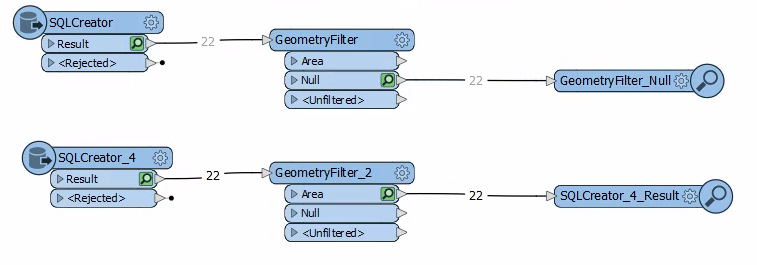I'm using an SQL Creator to return data from three tables (Microsoft SQL Server), one of which contains a geometry column.
Initially, I was just joining two tables and this all worked as expected with the geometry being correctly displayed within FME. When i amended the SQL to include a third table, the geometry column seems to have stopped being interpreted as geometry and is now displayed as an attribute containing binary data.
A bit more investigation, if I limit the fields being returned by the SQL creator, the geometry is interpreted correctly (bottom SQL creator). If i attempt to return all fields (explicitly naming or using *), the geometry field is returned as an attribute

Additional information, only the table I'm attempting to get the geometry from has a geometry column.
Am I missing something obvious?
FME(R) 2020.2.2.0 (20210111 - Build 20817 )






